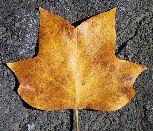...more recent posts
White Out
Today is Pentecost, the day on which the Holy Spirit descends upon the disciples of the Christ. This page is certainly not meant as a Christian exegeses, and you may note that I did not touch on last week’s Feast of the Ascension. My concern with the Holidays is not so much in following a prescribed path, as it is to find a path; learning why a day is marked, and determining which are fit for celebration. In practice, this means taking some note of all our “official” holidays, as sanctioned by the federal government. These are Holidays by law, affecting us whether we will or no. They generally provide a day off for much of the populace. How we use this compulsory free time can say a lot about us.There are other, unofficial, Holidays which are widely honored, and these, too, tell us much about our needs and uses. Valentine’s Day and Halloween both have Traditional roots, but have retained their relevance by adjusting to changing times. Even the much maligned “commercial”, or “made-up” holidays cannot be ignored, if they fill a genuine need, Mother’s Day being the most successful example.
The most important Holidays reveal truths about our culture, as we struggle to find an appropriate stance to take in their regard. Christmas and Easter are nominally our “biggest” holidays, or, at least, Christmas is most vigorously celebrated (with money), and Easter is the highest holy day of our most prevalent religion. Because we separate church and state, Easter is not a federal holiday. Still, we manage to include it in Spring's school holidays, which means a whole week off; a period only matched at Christmas. Strangely, Christmas is a governmental holiday, but it is celebrated as the apotheosis of Capitalism, so apparently there’s no real conflict there.
Look closely enough at any Traditional system, such as Christianity, and you will find that every day has its special meanings, though some days mean more than others. Minding these meanings can keep one busy, and also, in line (Lectionary Resources is useful for keeping up). Our World has tended to cram more meaning into fewer Holidays, while treating the rest of time as all the same. This allows us to focus on other things, but we may find we have wondered far from the path, becoming lost without noticing.
For my part, I’d just as soon tell time by watching the grass grow, which also works. I didn’t really mean to treat Pentecost, considering it to have been implied in my Easter posts. Still, I am concerned with ways in which we may obtain the Holy Spirit, and I’m also reminded that the issue of Whitsun came up in relation to the Robin Hood and Maying material.
Whitsun, or White Sunday, is a British name for this day. Most references cite a tradition of holding christenings on Pentecost, just as the disciples were baptized on that day with holy spirit. The white garments worn for the ceremonies are said to have lent the name. Knight’s footnotes to “Robin Hood and the Monk” offer a deeper (and to me, preferable) reading, linking whiteness to the blossoms of Spring. He mentions this in the course of arguing for “Somer” as late May, but this year, Whitsun falls well into June. The date is figured from Easter, which is the first Sunday after the first full moon occurring after the Vernal Equinox. This year, the Equinox fell on the full moon, pushing Easter (and thus Whitsun) back, to the latest dates possible. That the most important date in Christianity is determined by a variable natural cycle illustrates something about the appropriate use of literalism in approaching the Spiritual.
As far as the Holy Spirit goes, It’s said to have come down that Sunday as tongues of flame, though it’s more often represented in the form of a dove. I think I’m on record as saying that everything in Creation is accomplished through the agency of this Spirit, if we can but see it. Therefore, I see Pentecost as an event not of acquisition, but of recognition. We may all learn to recognize the sanctity of existence, even if we do not note the dove descending, as in the paintings of old. Keen powers of perception will be needed, indeed, if we are to see how a thing well symbolized by burning tongue may just as soon be called a dove.
Still, a Dove's a bird; get out your binoculars!
Here are a few white flowers I saw through mine.
